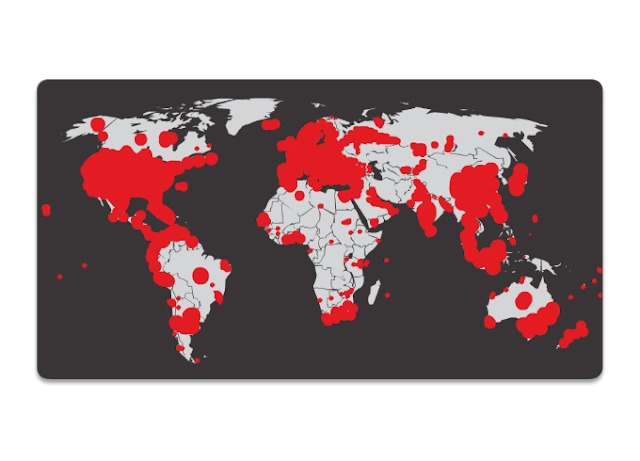Cybersecurity|| What is Cyber Attack?|| Types of Cyber Attack|| LearnTopicWise
What is cyber attack?
A cyber attack is an attack launched by cybercriminals using one or more computers against single or multiple computers or networks.
A cyber attack can maliciously disable computers, steal data, or use a breached computer as a launch point for other attacks. Cybercriminals use a variety of methods to launch a cyberattack, including malware, phishing, ransomware, denial of service, among other methods.
Definition of cyber attack-
- " A cyberattack is a malicious(malware) and deliberate attempt by an individual or organization to breach the information system of another individual or organization. Usually, the attacker seeks some type of benefit from disrupting the victim’s network. "
- "A Cyberattack is an attack initiated from a computer against a website, computer system or individual computer (collectively, a computer) that compromises the confidentiality, integrity, or availability of the computer or information stored on it."
Types of Cyber Attacks-
There are several types of attack are present some of them are given below-
1. Malware Attack- A malware attack is a common cyberattack where malware executes unauthorized actions on the victim’s system. The malicious software encompasses many specific types of attacks such as ransomware, spyware, command and control, and more
2. Phishing attack- Phishing attacks are the practice of sending fraudulent communications that appear to come from a reputable source. It is usually done through email. The goal is to steal sensitive data like credit card and login information or to install malware on the victim’s machine. Phishing is a common type of cyber-attack that everyone should learn about in order to protect themselves.
3. Man-in-the-middle attack- Man-in-the-middle (MitM) attacks, also known as eavesdropping attacks, occur when attackers insert themselves into a two-party transaction. Once the attackers interrupt the traffic, they can filter and steal data.
4. Denial-of-service attack- Denial-of-Service (DoS) attacks are a type of network attack. A DoS attack results in some sort of interruption of network service to users, devices, or applications. There are two major types of DoS attacks-
- Overwhelming Quantity of Traffic - This is when a network, host, or application is sent an enormous quantity of data at a rate which it cannot handle. This causes a slowdown in transmission or response, or a crash of a device or service.
- Maliciously Formatted Packets - This is when a maliciously formatted packet is sent to a host or application and the receiver is unable to handle it. For example, an attacker forwards packets containing errors that cannot be identified by the application, or forwards improperly formatted packets. This causes the receiving device to run very slowly or crash.
5. Blended Attack- Blended attacks are attacks that use multiple techniques to compromise a target. By using several different attack techniques at once, attackers have malware that is a hybrid of worms, Trojan horses, spyware, keyloggers, spam, and phishing schemes. This trend of blended attacks is revealing more complex malware and places user data at great risk.
6. Distributed DoS Attack (DDoS)- A Distributed DoS Attack (DDoS) is similar to a DoS attack but originates from multiple, coordinated sources. As an example, a DDoS attack could proceed as follows:
An attacker builds a network of infected hosts, called a botnet. The infected hosts are called zombies. The zombies are controlled by handler systems.
The zombie computers constantly scan and infect more hosts, creating more zombies. When ready, the hacker instructs handler systems to make the botnet of zombies carry out a DDoS attack.
8. Brute force Attack- It is a type of attack which uses a trial and error method. This attack generates a large number of guesses and validates them to obtain actual data like user passwords and personal identification numbers. This attack may be used by criminals to crack encrypted data, or by security, analysts to test an organization's network security.






Very helpful for us thank you so much
ReplyDelete